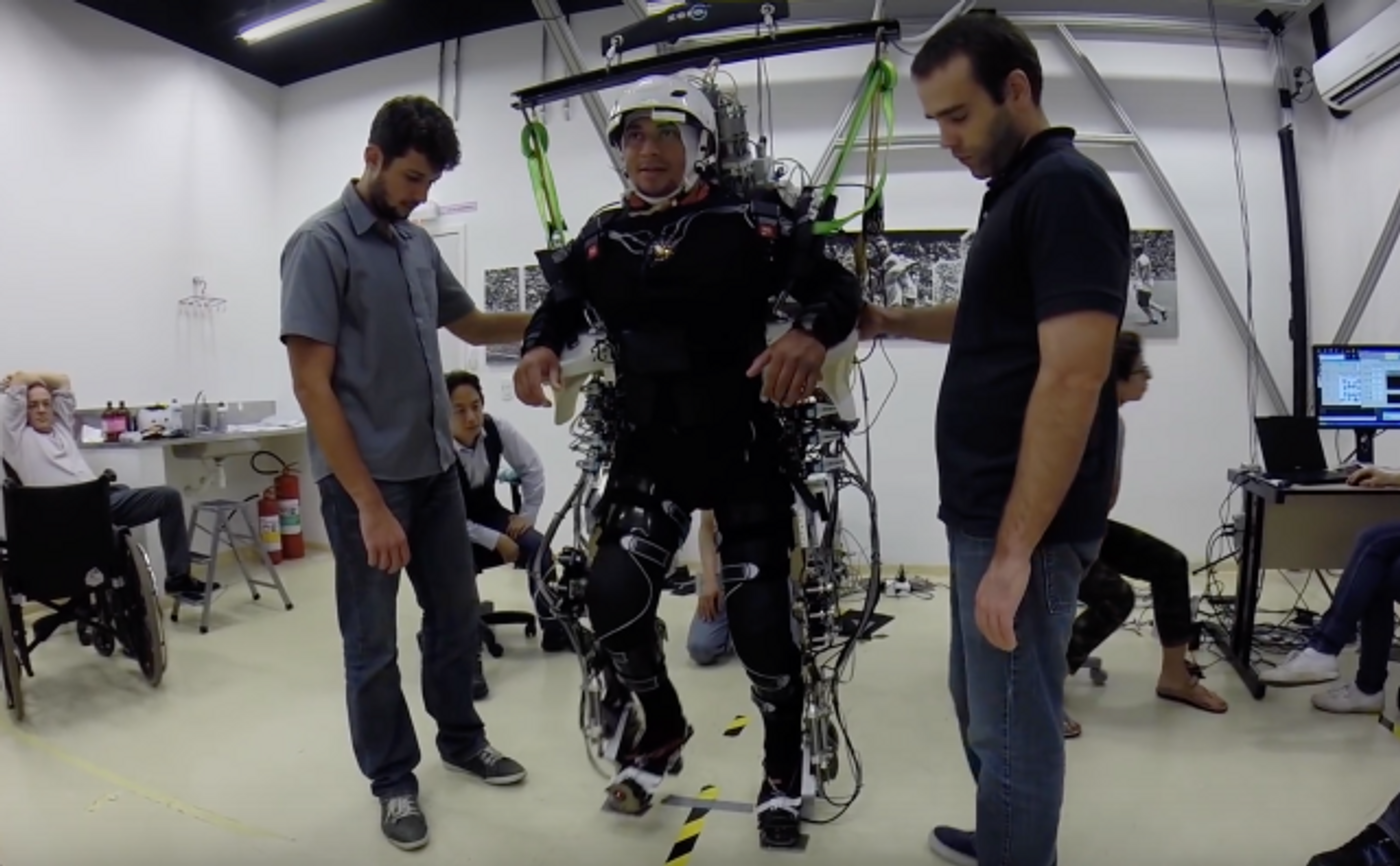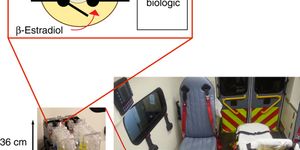When science experiments work as planned, researchers are overjoyed. And in the rare instances when the results actually surpass expectations, it’s so astonishing that some may even call it the M-word… a scientific
miracle.
Indeed, when 8 paraplegics signed on to a study that aimed to use brain-training with robotic exoskeletons, no one expected that all of them would
regain sensation and movement in their limbs. But this unexpected good fortune is exactly what happened.

The 8 participants were part of a neuro-rehabilitation study led by Dr. Miguel Nicolelis of Duke University. This program entailed 12 months of intense training with brain-machine interfaces (BMI), which are electronic communication systems that translate brain activity to a computer. This allows patients to control external devices, like prostheses and robotic exoskeletons, with just their thought.
Just learning how to move a machine attached to a limb is in itself a monumental feat of technology and brainpower. But it appears this skill has exceptional benefits.
"We couldn't have predicted this surprising clinical outcome when we began the project," said Nicolelis who led the trial. “What we’re showing in this paper is that patients who used a brain-machine interface for a long period of time experienced improvements in motor behavior, tactile sensations, and visceral functions below the level of the spinal cord injury.”
"If you touched them with a pin, or a brush… they would feel something that they didn't experience before," said Nicolelis. "They also experienced a significant visceral improvement. This translated into better bowel and bladder functions - which are very critical for these patients."
How could this have happened? Scientists think the BMI training was powerful enough to reawaken some spinal cord nerves that were damaged, but not yet dead. "Over time, training with the brain-machine interface could have rekindled these nerves," said Nicolelis. "It may be a small number of fibers that remain, but this may be enough to convey signals from the motor cortical area of the brain to the spinal cord."
The changes are significant, too. Four of the eight patients experienced such drastic improvements that they’re now considered to have “partial paralysis” instead of “complete paralysis.”
The person with the biggest improvement in movement and sensation was a 32-year-old woman, who, by the end of the study, was able to move her legs on her own with the help of a harness that supported her weight. This is a huge accomplishment, considering the woman had been paralyzed for 13 years.
That the changes were so dramatic after so long points to the immense plasticity of the brain. "It clearly shows that there's a lot of untapped neuroplasticity potential within even a chronic spinal cord injury patient," said Mark Bacon, chief executive at the UK charity
Spinal Research who was not associated with the study.
Additional sources:
Live Science,
BBC


![[Guide] 7 Strategies to Boost Laboratory Collaboration](https://d3bkbkx82g74b8.cloudfront.net/eyJidWNrZXQiOiJsYWJyb290cy1pbWFnZXMiLCJrZXkiOiJjb250ZW50X2FydGljbGVfcHJvZmlsZV9pbWFnZV83YzBjZWIwM2Y5YzI4MmFlYzBhZDZhMTcyNTQ1ZGU3YmE4Y2MzMDYyXzUxNDkuanBnIiwiZWRpdHMiOnsidG9Gb3JtYXQiOiJqcGciLCJyZXNpemUiOnsid2lkdGgiOjcwMCwiaGVpZ2h0IjozNTAsImZpdCI6ImNvdmVyIiwicG9zaXRpb24iOiJjZW50ZXIiLCJiYWNrZ3JvdW5kIjoiI2ZmZiJ9LCJmbGF0dGVuIjp7ImJhY2tncm91bmQiOiIjZmZmIn19fQ==)






